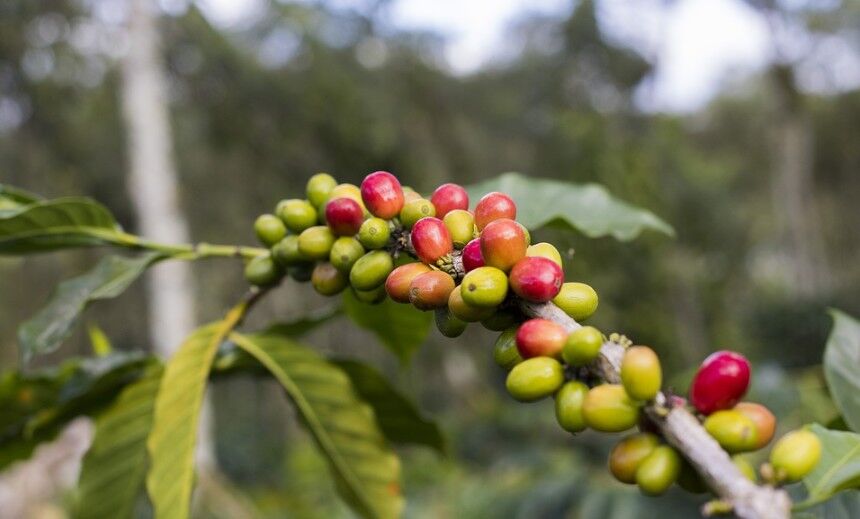Drinking coffee has been a part of the morning routines of most people today. In fact, some can’t start their day without drinking a cup of freshly brewed coffee. When you go out of the city streets on a weekday morning, you will see a lot of people rushing work while holding a cup of coffee from their favorite coffee shops. But did you know that hundreds of years before Starbucks, Tim Hortons, and other coffee shops became a place for making social and business networks over laptops and lattes, successful coffeeshops of a much different type were very popular in the Arab world?
The first coffeehouses are located in the holy city of Mecca, in present-day Saudi Arabia. They were public spaces called Kaveh Kanes. And just like why people got to Starbucks today, people gathered there for the same reasons, which are for coffee and conversations. It is a place where they share news and as well as to conduct business. The early Arabian coffeehouses were vibrant places that are filled with singing and dancing performers that are turning to the rhythm of Middle Eastern music.
Many people from different parts of the world visited Mecca every year. When they returned home back in those times, they took with them stories about the “wine of Araby,” which is what coffee was once called. However, Arab leaders were afraid to lose their monopoly on the coffee trade. To avoid coffee from being cultivated elsewhere, they banned the export of coffee beans. But in 1616, Dutch traders evaded these export limitations, and the world changed since then.
As years and centuries passed, coffee became more popular. In fact, it is the most widely traded agricultural commodity in the world based on the International Coffee Organization. Around 70 countries produce coffee, and there were about 26 million people in 52 producing countries who are employed in the coffee sector. The demand and cultural popularity of coffee worldwide made it one of the foods that have the biggest impact on history.
If you want to know more about how coffee changed the world, read on because we are going to tell you more about the role of coffee in history.
The Origin of Coffee
According to legends and different reports about coffee, its origin can be traced as far as the 10th century. Some of these stories can’t be verified, but one of the sure ones is theuncultivated origin of coffee, whichcame from the high mountain rain forests of the southwestern Ethiopian province of Kaffa. These mountains are where the tree species, Coffea arabica, can be found. They produce a fruit called coffee cherry.
It was named coffee cherry because it turns bright red when it gets ripe and ready to pick. Its skin has a bitter taste, but the underlying fruit tastes sweet. Thousands of years ago, in Africa, locals would mush the ripe cherries from wild coffee trees to make a dried traveling food. The fruit was rich in protein. But aside from that, the world would discover the real value of the coffee cherry is deep in its core, which is the seed. The coffee beans, when roasted, produced the coffee cherry’s most alluring flavor.
The coffee cherries were brought across the Red Sea to Mocha, which is the great Arab port of the day. Based on some records, the slaves from present-day Sudan, which borders Kaffa on the west, ate the coffee cherries. Then, they were taken into Yemen and Arabia. However, how the coffee cherries were taken from the Horn of Africa to the Arabian Peninsula, and the secret of discovering the beans were lost in time.
What’s known in history is that the first validated knowledge of the wonders of the coffee tree or drinking of coffee happened during the mid-15th century in the Sufi monasteries of Yemen. The Arabs, aside from being the first to cultivate coffee and the first to make coffee beans into a drinkable liquid, were also the first to start the coffee trade. When the 16th century came, coffee was known in Egypt, Turkey, Syria, and Persia.
To prevent the cultivation of coffee in other places, the Arabs imposed a ban on the export of fertile coffee beans. However, this restriction was evaded in 1616 by the Dutch. They brought live coffee plants back to the Netherlands and grew them in greenhouses.
The coffeehouses that began in Mecca were public places. The authorities in Yemen encouraged people to drink coffee. Before long, the conversations in those coffeehouses turned politics, making them a center of political activity. Between 1512 and 1524, both coffeehouses and coffee drinking were banned by the imams. During those times, drinking coffee was rooted in the culture, and coffeehouses kept on reappearing. Finally, the authorities and the public found a way to keep coffee as a drink and coffeehouses as a place to gather through imposing a tax on both.
After that, coffeehouses spread to other cities and towns in the Arab world. In 1530, the first coffeehouse in Damascus opened. Then, many coffeehouses emerged in Cairo. In 1555, it was followed by the first coffeehouse in Istanbul.
Coffee Outside the Ottoman Empire
The Dutch began growing coffee outside the Arab world by the late 1600s. Their first attempt was in Malabar in India, but it failed. Then, in 1699, they tried again in Batavia in Java, which is now known as Indonesia. It wasn’t long before the Dutch colonies became the main suppliers of coffee to Europe. It was where people had heard stories from travelers to the Near East about the unusual black beverage.
In 1629, the first coffeehouses outside of the Ottoman Empire appeared in Venice in Europe. In 1652, the first coffeehouse in England opened, and by 1675, there were over 3,000 coffeehouses in the country. Did you know that before Lloyd’s of London became a global insurance company, it was first known as Edward Lloyd’s Coffee House?
In Paris, the first coffeehouse opened in 1672. It was followed by Café Procope in 1686, which became the city’s most popular coffeehouse. It was a famous meeting place during the French Enlightenment, and it’s the birthplace of the encyclopedia. This coffeehouse is still open today.
Coffee was not a popular drink in Europe before. In fact, some people do not like it, and the clergy in Venice condemned it. Pope Clement VIII was even asked to intervene, but since he liked it, he gave coffee the Papal approval. Customs during those times also did not always approve of women in coffeehouses. Women were once banned from many of the early European coffeehouses, especially in France and England. On the other hand, Germany did allow women to be in them.
Coffee in the Americas
Coffee was also brought by the Dutch across the Atlantic to Central and South America. They first introduced it to the Dutch colony of Surinam in 1718, then to French Guyana and then to Brazil. The British then brought coffee to Jamaica in 1730, which today produces the most expensive coffee in the island country’s Blue Mountains.
After a hundred years, Brazil became the largest coffee producer in the world. They are able to make 600,000 bags of coffee in a year. The production of coffee continued to spread in the Americas. It reached Mexico, El Salvador, Guatemala, and Colombia. These places greatly benefited in 1914 when the Panama Canal was opened. The canal allowed coffee to be exported for the first time from the unreachable Pacific Coast.
Coffee in North America
In the mid-1600s, the first coffeehouses in the New World emerged in New York, Boston, Philadelphia, and other towns of the British colonies. However, during this time, tea was still the preferred drink of most people. But that changed forever in 1773when the colonist revolted against King George. They dumped tea into Boston Harbor during the Boston Tea Party, which was all planed in the Green Dragon coffeehouse. The New York Stock Exchange and the Bank of New York both started in coffeehouses, and they are known today as Wall Street.
When the 20th century arrived, there was political chaos and social disturbance. But the demand for coffee increased steadily in the United States. The annual per capita consumption of coffee by 1946 was 19.8 pounds, which is twice of that in 1900. Years after World War II, the process of decolonization began, and the production of coffee spread to many newly independent nations in Africa, including Kenya, Rwanda, Burundi, and Uganda. These places found themselves in varying degrees, dependent on their revenue on exporting coffee.
From the 1950s, the revival in American fold music increased the popularity of coffee shops. The Italian immigrants made coffee shops popular in the Italian communities in the major cities in the United States, most especially in New York, Little Italy, and North Beach in San Francisco.
In 1971, Starbucks began with a single storefront in the sprawling Pike Place Market of the city on Puget Sound. The name of the coffee shop was inspired by the novel “Moby-Dick” to arouse the romance of the high seas and the seafaring tradition of the early coffee traders. In 1987, Howard Schultz, chairman, president, and chief executive officer, bought the company with a vision of spreading the experience of Italian coffee bars and the romance of the coffee experience across America.
In the present time, the United States is the largest consumer of coffee in the world. Based on industry group reports, Americans spend more than $40 billion a year on coffee.
Conclusion
It’s amazing to know that in the many things that happened in history, coffee was there. Coffeehouses were the center of political and business talks in history, and they were also what many big corporations today started on. We hope the information we shared here was able to help you in further understanding the role of coffee in history.



